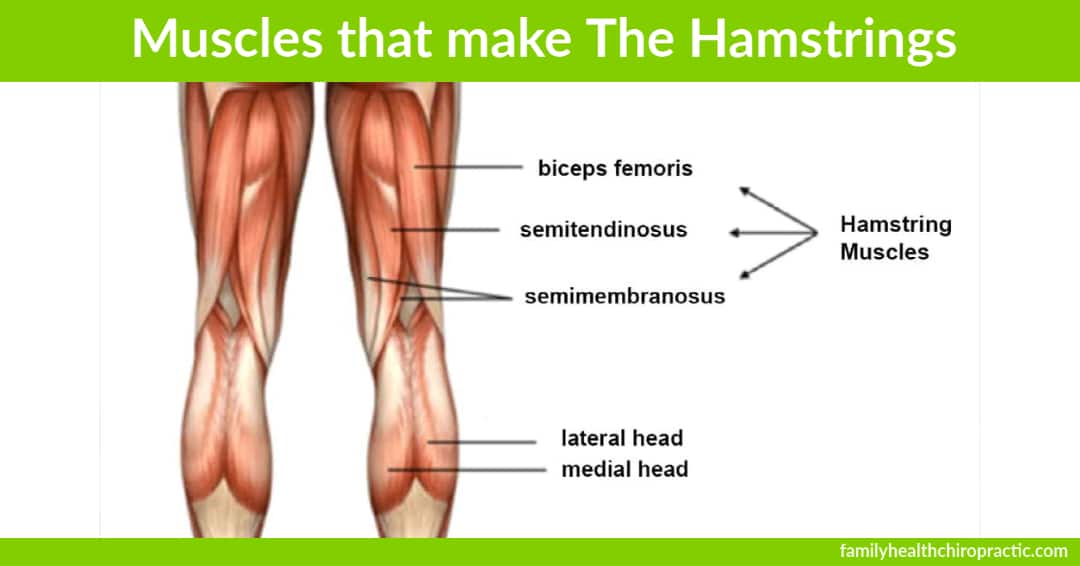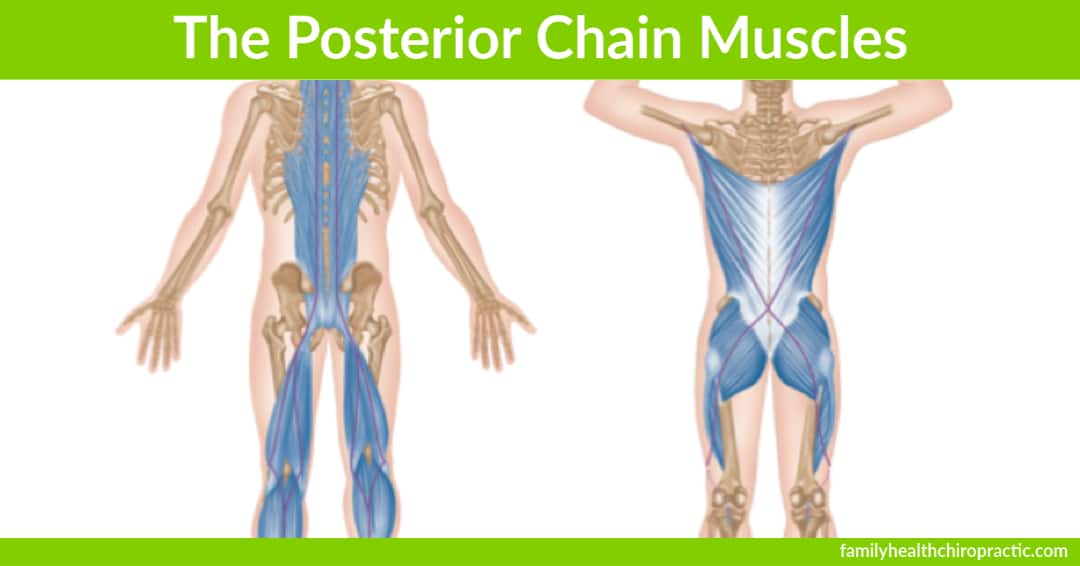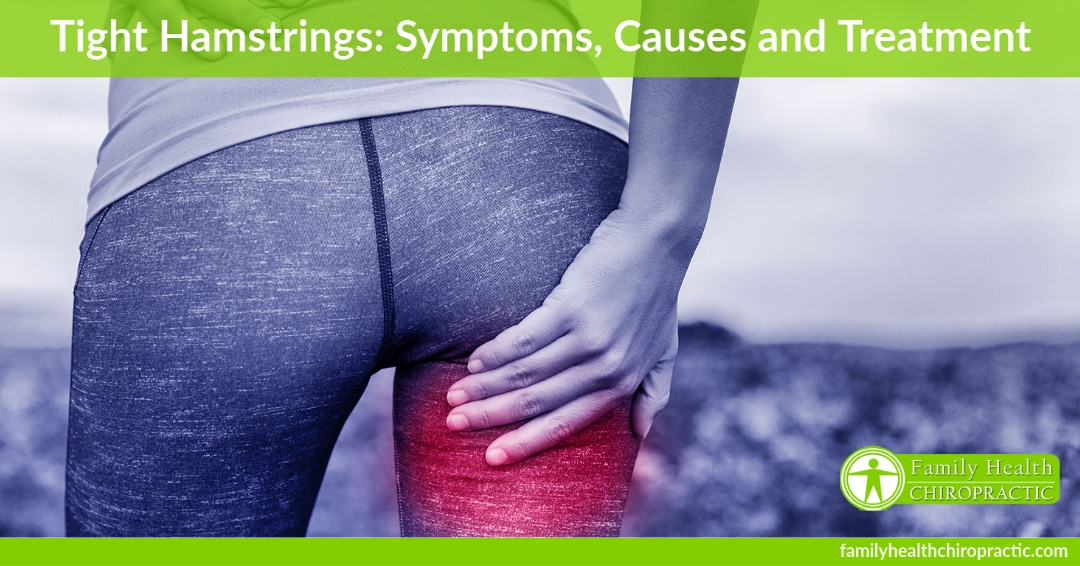What to Know About Tight Hamstrings
Almost every patient that we evaluate for back pain in our chiropractic office has tight hamstrings.
This is because tight hamstrings cause stiffness and limit mobility.
The hamstrings are a group of muscles that can be viewed as the unsung heroes of the upper legs.
The three muscles in the back of the thigh allow us to bend our knees and pull our legs back as we walk.
They also assist the gluteal muscles, which are the powerhouses that propel us forward when getting up from a chair, leaping across a room, or climbing stairs.
The glutes (butt muscles) help us come to a stop from a run or walk and lower our bodies to sit down or squat.
Weak gluteal muscles wind up overburdening the hamstrings.
This is because there's a strong interplay between the glutes and our hamstrings. When the glutes are weak, which is common in the age of sitting too much, the hamstrings are continually overworked and overloaded, resulting in tight hamstrings.
Tight hamstrings can make it difficult to walk or stand comfortably, which in turn impacts our posture and activities of daily living.
In this article, we discuss symptoms, causes and a few treatments for tight hamstrings.
Symptoms of Tight Hamstrings
The hamstrings are a group of muscles that run down the back of the leg.
There are three muscles that make up what we refer to as “the hamstrings”:
- biceps femoris
- semitendinosus
- semimembranosus
Together, these muscles support our ability to walk, run, and jump.
Some of the more obvious signs of tight hamstrings include:
- cramping
- pain
- swelling
- bruising
- tenderness
- redness
Having tight hamstrings can also increase the risk of injury.
Less common signs and symptoms would include:
- pulled muscle (muscle strain or tendonitis)
- weakness of the hamstring (ligament sprain)
- weak hip flexors
- constant back pain
- knee pain or injuries
- foot pain

What Causes Tight Hamstrings?
The most common cause of tight hamstrings is exertion or intense forms of exercise.
The tightness will usually occur after starting a new exercise routine or suddenly increasing workout intensity. In some cases, this can be completely normal due to lack of physical activity and training.
It could also be argued that tight hamstrings is most often caused by sedentarism or physical inactivity.
It is well documented that tight hamstrings occur after long periods of sitting or inactivity.
For example, sitting at a desk for two to three hours at a time will invariably lead to tightness.
In other cases, the tightness might be due to injury, possibly a recurring injury that makes the hamstrings more vulnerable to tightness.
Although it may seem as though tight hamstrings are due to tight muscles, the reality is, most of us with tight hamstrings have abnormal posture and alignment that causes these muscles to continuously overload.
This is where balancing our posterior chain (hamstrings and glutes) with a strong anterior core (abs) to maintain hip alignment becomes detrimental to overcoming tight hamstrings.
As with most mechanical problems, strength and good movement are the answer.

What Treatments to Consider for Tight Hamstrings
Tight hamstrings are usually not a cause for concern but left unchecked, they can absolutely wreck your body posture and alignment.
We should always start with a strong foundation of maintaining good posture throughout the day, working on our flexibility and mobility and strengthening the muscles that support our body.
Strengthen The Posterior Chain
The posterior chain is the most influential muscle group in the body.
The posterior chain is quite simply the backside of the body including part of our core musculature.
Its primary muscles include the lower back, glutes, hamstrings and the calves. Other muscles include the trapezius, posterior deltoids and latissimus dorsi, transvere abdominus and diaphragm.
All these muscles play an essential role in our ability to move and stabilize, and therefore not only affect our day to day movements but also our athletic performance.
Therefore, to truly overcome your tight hamstrings, you'd want to make sure that you are activating and strengthening these muscles.
Some of the best exercises to maintain the health of these muscles include:
- Weighted or Body Weight Squats
- Deadlifts
- Weighted or Body Weight Lunges
- Extension based exercises
- Hip Thrusters
Fix Your Posture & Alignment
Because the hamstrings attach to the top of the back of the pelvis when sitting, sitting itself contributes to tightness. The problem isn’t necessarily the inactivity, but a faulty position that we place our body in.
If the pelvis is tilted too far forwards, as is often the case when seated, this puts the hamstring in to a lengthened and weakened position. This inevitably results in us ‘feeling tight’, yet the muscle is actually long.
This is a very important concept to understand. When we feel tightness, the muscle itself may not be shortened or tight, but rather lengthened and inactive.
The solution therefore is to not stretch or lengthen the muscle further, but to change or correct our position and strengthen the muscle.
True Tightness or Shortened Muscles
Though the need to stretch hamstrings is not the most common cause of tightness, there absolutely occasions where we need to stretch our hamstrings.
In these cases, rather than just folding forward and grabbing your ankles, you'd want to focus on a low-load, long duration type of stretching.
This involves gently restoring muscle range using braces, beanbags, resistance bands, splints and pillows.
A few examples would include:
- Lying hamstring stretch with a band
- Seated hamstring stretch while on a chair
- Downward Dog
- Bended knee hamstring stretches

How Chiropractic Can Help
If you’ve ever gone for a run or a workout without stretching first, you can probably remember the feeling of your leg muscles tightening and being sore the next day.
Hamstring tightness is a common problem for many people.
Consistent tightness in the back of the legs is not only uncomfortable but can also make exercising extremely difficult.
However, many people stretch every day to relieve hamstring tension, only to see no results.
While this can be frustrating, it likely indicates that the problem does not lie in your muscle’s length.
Instead, there may be another underlying problem that needs to be identified and addressed.
Family Health Chiropractic utilizes Chiropractic BioPhysics (CBP), a chiropractic approach that diagnoses and treats the root of your pain, not just the symptom, with chiropractic adjustments.
If you are frustrated by hamstring tension, make an appointment with a our chiropractor to get help identifying the true issue.



